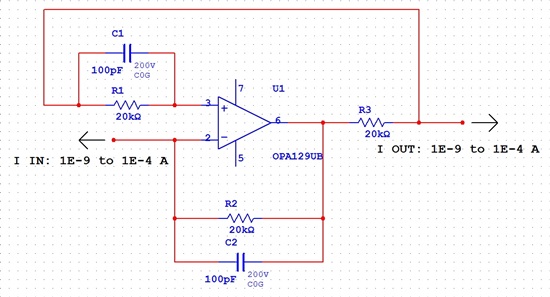I am trying to measure a negative input current with a LOG102 amp. The data sheet specifies several options, however, they specify input currents of 10 nA to 1mA, and I would like to be able to measure currents of 1 nA to 100 uA. The LOG102 is floating at a voltage which varies from 0 V - 10 V, and has +/-15 V supply. Currently I am using an OPA129 to invert the current, however, at low currents, the behavior is not ideal.
-
Ask a related question
What is a related question?A related question is a question created from another question. When the related question is created, it will be automatically linked to the original question.


